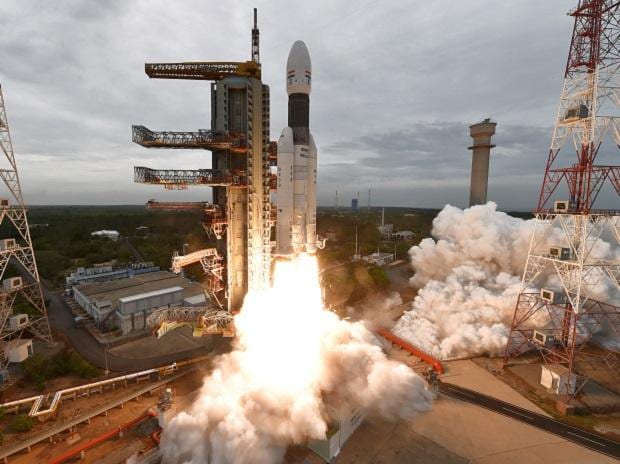
GSLV-MkIII-M1 rocket carrying Chandrayaan-2 lifts off from Satish Dhawan Space Centre, at Sriharikota in Nellore district of Andhra Pradesh | Photo: ISRO
Indian Space Research Organisation (ISRO) announced the launch of Chandrayaan 3, India’s third lunar mission, on Wednesday.
According to the ISRO chairman, the spacecraft is fully integrated and has completed the testing, the window for the launch of Chandrayaan 3 is between July 12 to 19. The exact date for the launch will be announced soon after completing all the tests. The ISRO chief assured the launch will take place as early as possible.
The Chandrayaan-3 will be launched from the Satish Dhawan Space Centre in Sriharikota by the launch vehicle mark III.
This spacecraft consists of an indigenous Lander Module (LM), a Propulsion Module (PM), and a rover to develop and demonstrate new technologies required for interplanetary missions.
This is a follow-on mission to Chandrayaan-2, which crashed on the moon’s land four years back.
Several modifications have been made compared to the Chandrayaan-2 mission. The mission will have four motors instead of five, and many other changes have also been made. ISRO didn’t reveal the name of the lander and rover for the mission and may retain the names of the earlier lander, Vikram, and rover, Pragyan.
Another major addition in Chandrayaan-3 is the inclusion of the Spectro-polarimetry of the Habitable Planet Earth (SHAPE) payload.
This mission aims to explore the far side of the moon and will attempt to soft land on the lunar surface. The spacecraft is designed to conduct extensive studies and gather valuable on Earth’s spectral and polarimetric measurements from the lunar orbit.
According to reports, ISRO has shared three major objectives for the Chandrayaan-3: to achieve a safe and soft landing on the Moon, demonstrate the rover’s loitering capabilities on the lunar surface, and conduct in-situ scientific observations.
First Published: Jun 29 2023 | 11:36 AM IST
Note:- (Not all news on the site expresses the point of view of the site, but we transmit this news automatically and translate it through programmatic technology on the site and not from a human editor. The content is auto-generated from a syndicated feed.))



